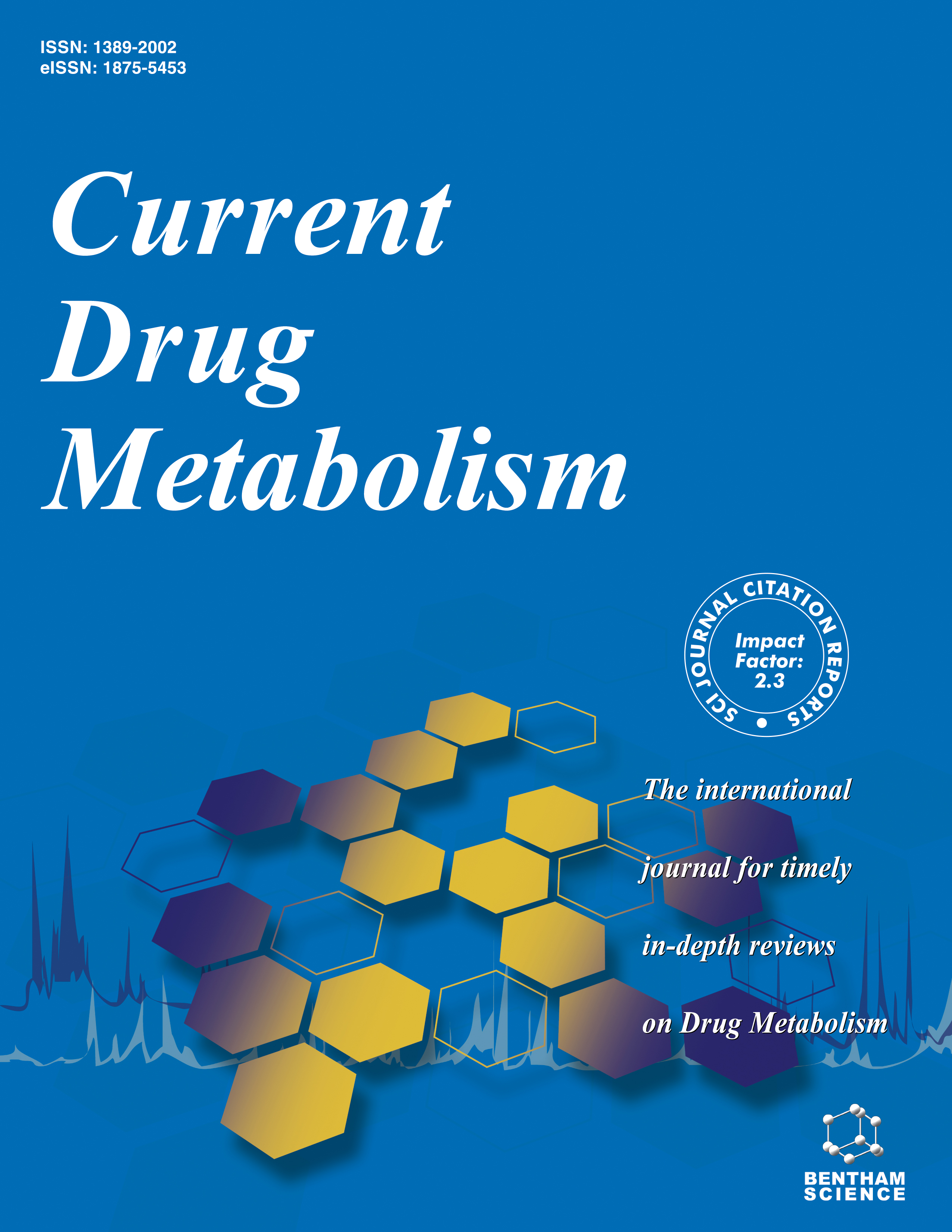- Home
- A-Z Publications
- Current Drug Metabolism
- Previous Issues
- Volume 17, Issue 1, 2016
Current Drug Metabolism - Volume 17, Issue 1, 2016
Volume 17, Issue 1, 2016
-
-
Bile Acids in Physiology, Pathology and Pharmacology
More LessAuthors: Jose J.G. Marin, Rocio I.R. Macias, Oscar Briz, Jesus M. Banales and Maria J. MonteBile acids, synthesized by hepatocytes from cholesterol, are specific and quantitatively important organic components of bile, where they are the main driving force of the osmotic process that generates bile flow toward the canaliculus. The bile acid pool comprises a variety of species of amphipathic acidic steroids. They are not mere detergent molecules that play a key role in fat digestion and the intestinal absorption of Read More
-
-
-
Impact of CYP2D6 Genetic Variation on the Response of the Cardiovascular Patient to Carvedilol and Metoprolol
More LessAuthors: Anastasios Lymperopoulos, Katie A. McCrink and Ava BrillCarvedilol and metoprolol are two of the most commonly prescribed β-blockers in cardiovascular medicine and primarily used in the treatment of hypertension and heart failure. Cytochrome P450 2D6 (CYP2D6) is the predominant metabolizing enzyme of these two drugs. Since the first description of a CYP2D6 sparteinedebrisoquine polymorphism in the mid-seventies, substantial genetic heterogeneity has been reported Read More
-
-
-
Ceramide: Therapeutic Potential in Combination Therapy for Cancer Treatment
More LessCombination therapy has become an important strategy for treating cancer in recent years. Ceramide, which is a powerful tumor suppressor, regulating the processes of cell proliferation, differentiation, senescence and apoptosis, has attracted tremendous attention in combination therapy for cancer treatment. It has been demonstrated that combination of chemotherapeutic drugs and ceramide led to a reversion of multid Read More
-
-
-
Clinically Relevant Pharmacokinetic Herb-drug Interactions in Antiretroviral Therapy
More LessAuthors: Pius S. Fasinu, Bill J. Gurley and Larry A. WalkerFor healthcare professionals, the volume of literature available on herb-drug interactions often makes it difficult to separate experimental/potential interactions from those deemed clinically relevant. There is a need for concise and conclusive information to guide pharmacotherapy in HIV/AIDS. In this review, the bases for potential interaction of medicinal herbs with specific antiretroviral drugs are presented, and several botanic Read More
-
-
-
Cytochrome P450-Mediated Estrogen Metabolites and Autoimmunity: Relationship and Link to Free Radicals
More LessAuthors: Wahid Ali Khan and Mohd. Wajid Ali KhanCytochrome P450 enzymes are responsible for the hydroxylation of various endogenous estrogens of the Phase I metabolic pathway. Cytochrome P450s produce hormonally active estrogen metabolites that are typically reactive and mutagenic. Although these metabolites are known to have important roles in autoimmunity, the underlying mechanism of this remains unknown. Here we report that cytochrome P450-mediated Read More
-
-
-
The Role of the Metabolism of Anticancer Drugs in Their Induced-Cardiotoxicity
More LessCardioncology is a major topic of the day, since cardiotoxicity of chemotherapy agents can limit its real use and it can also become a clinical problem years after the end of anticancer therapy. These cardiac problems largely increase the mortality and morbidity of cancer-treated patients. Actually, as the number of cancer survivors is increasing each decade, late cardiotoxicity related to anticancer therapy is expected to gr Read More
-
-
-
Patients’ Induced Pluripotent Stem Cells to Model Drug Induced Adverse Events: A Role in Predicting Thiopurine Induced Pancreatitis?
More LessInduced pluripotent stem cells (iPSC) can be produced from adult cells by transfecting them with a definite set of pluripotency-associated genes. Under adequate growth conditions and stimulation iPSC can differentiate to almost every somatic lineage in the body. Patients' derived iPSC are an innovative model to study mechanisms of adverse drug reactions in individual patients and in cell types that cannot be easily obtained fr Read More
-
Volumes & issues
-
Volume 25 (2024)
-
Volume 24 (2023)
-
Volume 23 (2022)
-
Volume 22 (2021)
-
Volume 21 (2020)
-
Volume 20 (2019)
-
Volume 19 (2018)
-
Volume 18 (2017)
-
Volume 17 (2016)
-
Volume 16 (2015)
-
Volume 15 (2014)
-
Volume 14 (2013)
-
Volume 13 (2012)
-
Volume 12 (2011)
-
Volume 11 (2010)
-
Volume 10 (2009)
-
Volume 9 (2008)
-
Volume 8 (2007)
-
Volume 7 (2006)
-
Volume 6 (2005)
-
Volume 5 (2004)
-
Volume 4 (2003)
-
Volume 3 (2002)
-
Volume 2 (2001)
-
Volume 1 (2000)
Most Read This Month
Article
content/journals/cdm
Journal
10
5
false
en


